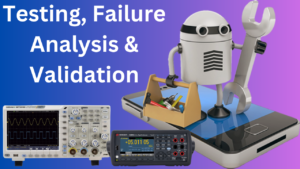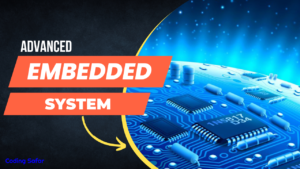Embedded systems are becoming an integral part of our daily lives, from smart homes to automobiles, medical devices, and industrial systems. As technology continues to evolve, the demand for skilled professionals in the field of embedded systems is also increasing. If you are preparing for an interview for a job in embedded C programming, here are 20 common interview questions and detailed answers to help you prepare.
What is an embedded system?
Answer: An embedded system is a computer system that is designed to perform specific functions within a larger system. It is programmed to perform specific tasks and operate in real-time.
What is an interrupt in an embedded system?
Answer: An interrupt is a signal that causes the processor to temporarily suspend its current execution and handle a specific event or task. Interrupts are used to handle real-time events in an embedded system.
What is the difference between a microprocessor and a microcontroller?
Answer: A microprocessor is a CPU (Central Processing Unit) that is used in computers, while a microcontroller is a complete system that includes a CPU, memory, and peripherals in a single chip.
What is the role of a compiler in embedded C programming?
Answer: A compiler is a software tool that converts source code written in a high-level language such as C into machine-readable code that can be executed on an embedded system.
What is a pointer in C?
Answer: A pointer is a variable that holds the memory address of another variable. Pointers are used extensively in embedded C programming to manipulate memory and data.
What is the difference between stack and heap memory?
Answer: Stack memory is used for storing local variables, function parameters, and return addresses, while heap memory is used for dynamic memory allocation.
What is the purpose of the volatile keyword in embedded C programming?
Answer: The volatile keyword is used to tell the compiler that a variable may be modified by an external entity, such as an interrupt or a hardware device.
What is the role of an RTOS (Real-Time Operating System) in an embedded system?
Answer: An RTOS is a specialized operating system that is designed to handle real-time events and tasks in an embedded system. It provides scheduling, memory management, and interprocess communication services.
What is a device driver in an embedded system?
Answer: A device driver is a software module that provides an interface between the hardware and the operating system. It allows the operating system to communicate with and control the hardware.
What is the difference between polling and interrupt-driven I/O?
Answer: Polling is a technique where the processor continuously checks the status of a device to determine if it needs attention, while interrupt-driven I/O is a technique where the device signals the processor when it needs attention.
What is the difference between static and dynamic memory allocation?
Answer: Static memory allocation is when memory is allocated at compile time, while dynamic memory allocation is when memory is allocated at run time.
What is a semaphore in an embedded system?
Answer: A semaphore is a synchronization mechanism that is used to control access to shared resources in an embedded system. It allows multiple tasks to access a shared resource without conflicts.
What is a watchdog timer in an embedded system?
Answer: A watchdog timer is a hardware device that is used to monitor the health of an embedded system. It resets the system if it detects a fault or error.
What is a bit field in C?
Answer: A bit field is a data structure in C that allows the programmer to specify the size of a variable in bits. It is used to save memory and improve performance in embedded systems.
What is the difference between a switch statement and an if-else statement in C?
Answer: A switch statement is used when there are multiple possible values for a variable, while an if-else statement is used when there are multiple possible conditions.
What is the role of a linker in embedded C programming?
Answer: A linker is a software tool that links object files produced by the compiler into an executable file that can be loaded onto the embedded system.
What is the difference between little-endian and big-endian byte ordering?
Answer: Little-endian byte ordering is when the least significant byte is stored first, while big-endian byte ordering is when the most significant byte is stored first. The choice of byte ordering depends on the architecture of the embedded system.
What is the role of a debugger in embedded C programming?
Answer: A debugger is a software tool that allows the programmer to examine and modify the state of the program during execution. It is used to debug and troubleshoot embedded systems.
What is the difference between static and dynamic linking?
Answer: Static linking is when the linker combines all the object files into a single executable file, while dynamic linking is when the linker links the object files at runtime.
What is the role of a timer in an embedded system?
Answer: A timer is a hardware device that is used to measure time intervals in an embedded system. It can be used to generate interrupts and trigger events at specific intervals.
Conclusion: Embedded systems are an integral part of modern technology, and the demand for skilled professionals in the field of embedded C programming is growing rapidly. To prepare for an interview in this field, it is essential to have a solid understanding of the fundamental concepts of embedded systems and be familiar with commonly used tools and techniques. With these 20 interview questions and detailed answers, you can gain a better understanding of what to expect and prepare yourself for success in your next embedded C programming interview.


